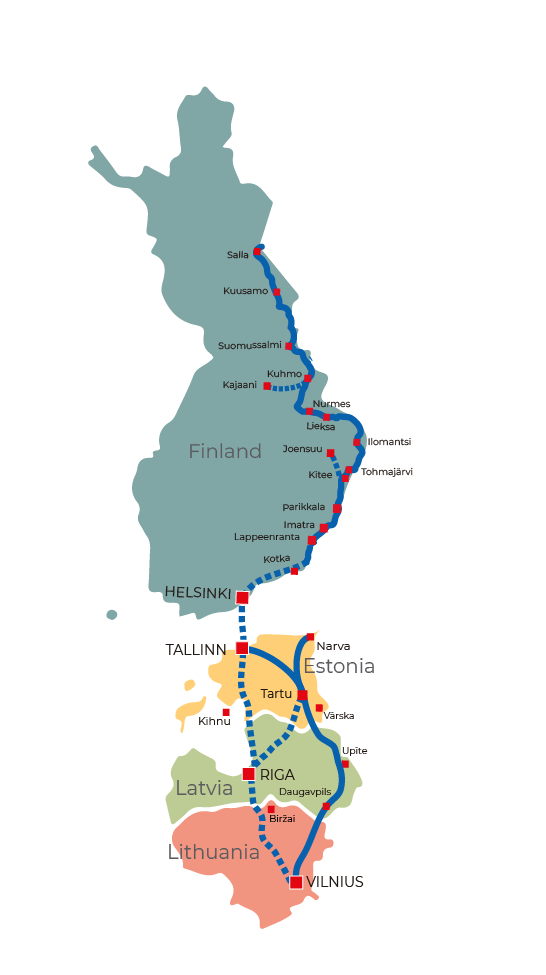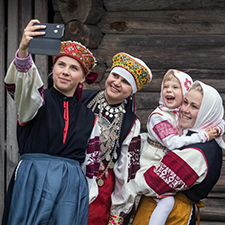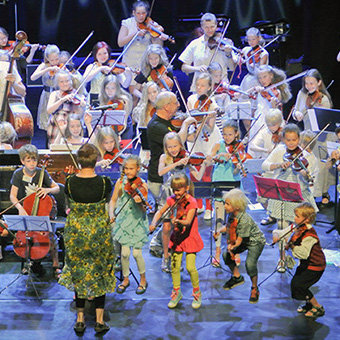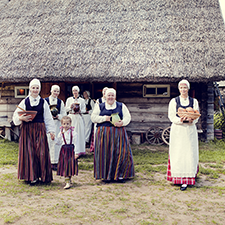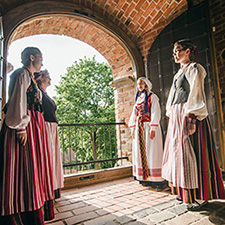The Culture Route of Singing Heritage
The Route
All the way from Salla, a northern municipality – which has a brand slogan on “Salla – in the middle of nowhere” – the Route goes through the Eastern parts of Finland (Via Karelia) to the Eastern parts of Estonia (Narva, Onion Route, Tartu, Setomaa), Eastern parts of Latvia (Latgale area, Upite and Daugavpils), has a side path to Riga, and finally through North-Eastern parts of Lithuania (Birzai area) to the capital of Lithuania (Vilniaus).
The Route has some side paths in all countries. In Finland, the Ontreri Malinen’s Kantele Route, Karelian Church Route and a hiking route of “Vienan reitti”, the ancient “Highway to Viena Karelia”. In Estonia it also goes to the famous Viljandi, and to the island of Kihnu. In Latvia, the Riga area and also the small parishes of Livonians belong to the Route. In Lithuania side paths goes through the charming small villages and the cities in the eastern part of the country.
The Route from one end to the other is about 2250 km long, but with the side paths it is about 3000 km.
Singing Heritage
Thousands of years ago, before the era of writing skill, singing were the most important cultural media. Because people were not able to write down their their thoughts or information they need to sang it. In each culture, communities created their own cultural singing traditions.
The general theme of the Route is the Intangible Cultural Singing Heritage, which is a unifying theme for all participating countries and cultures. The route connects many culturally indispensable singing traditions in the area, such as the runosong tradition of Finland, Ingria, Karelia and Estonia. In South-East Estonia they have multipart singing tradition leelo which is also one variation of runosong. In Eastern Latvia they have multipart singing tradition called singing with “pusbolss” and in Lithuania people sing sutartinés. In Estonia, Latvia and Lithuania they have common tradition the Baltic song and dance celebrations, which is also essential to the theme of the route.
The general theme of the Route has deep historical and living roots and It has been recognized in all four countries. It also has organic connections to contemporary artistic activities in all countries in the area.
European values
We want to build a common network on the easternmost edge of Europe. Where democracy is valued and maintained. We want every individual to have the right to human dignity.
We want to highlight the traditions maintained by small communities and today’s cultural activities. Both cultural and interpersonal equality drive our efforts forward to build a pathway to bring out the living cultural heritage.
Partners of the Singing Heritage Route Association ry
Finland
Runosong-Academy
The Route of Poems and Borders
Estonia
Estonian Folklore Archives of the Estonian Literary Museum
Estonian National Museum
Onion Route
Seto Institute
South-Estonian Tourism Cluster
Latvia
Latvian National centre of Culture
Upite Intangible Heritage Centre Upite
Initiative and Competences Support Center (ICSC)

